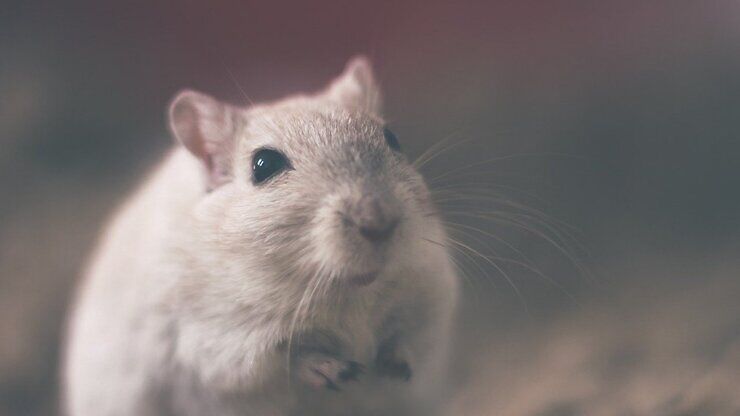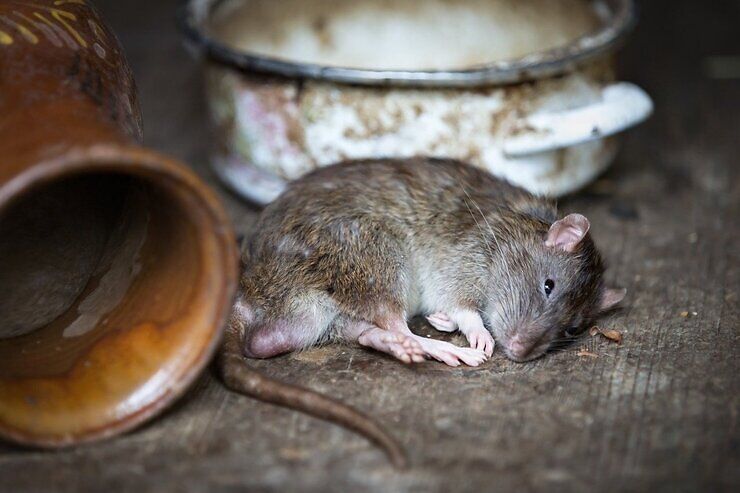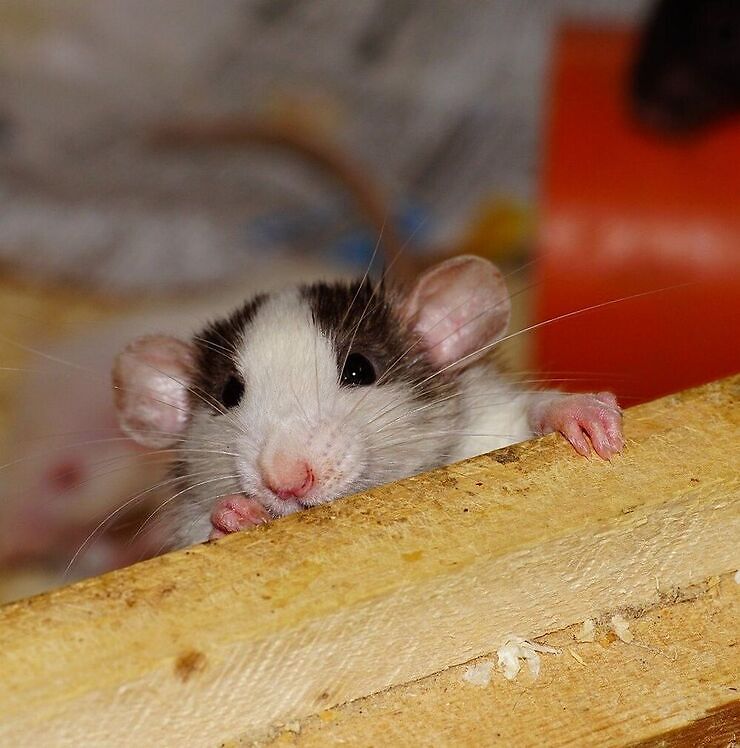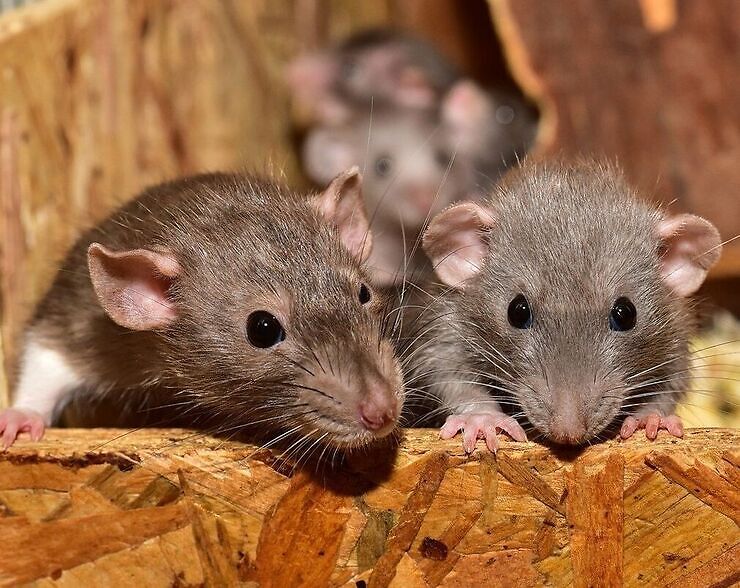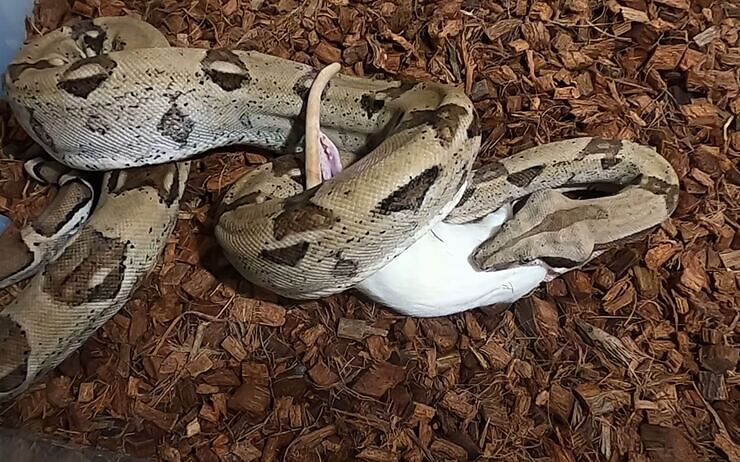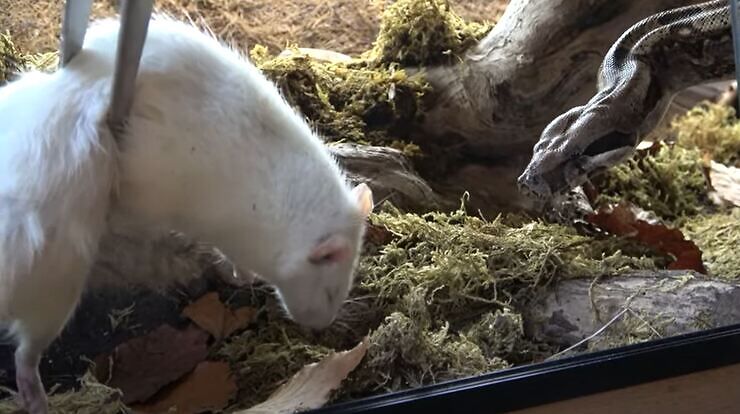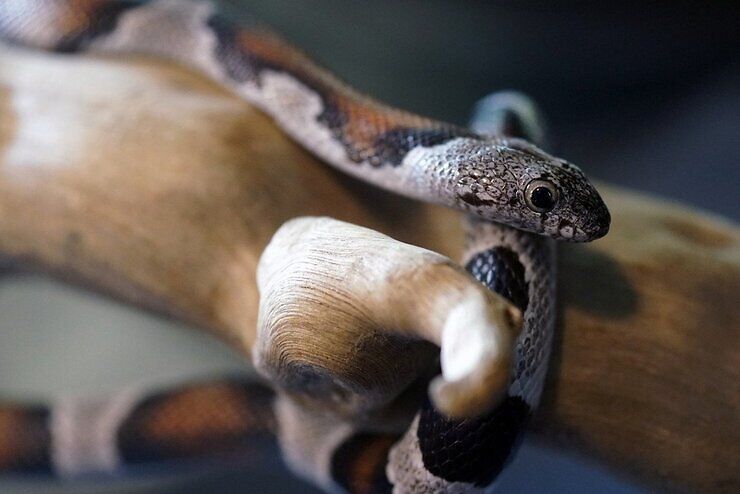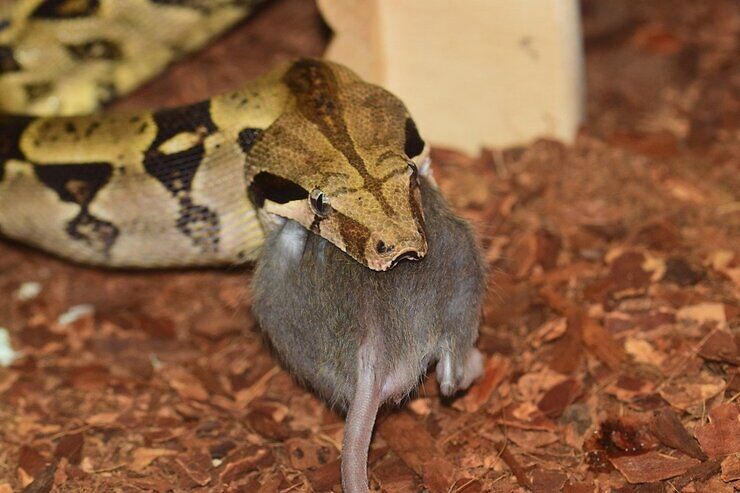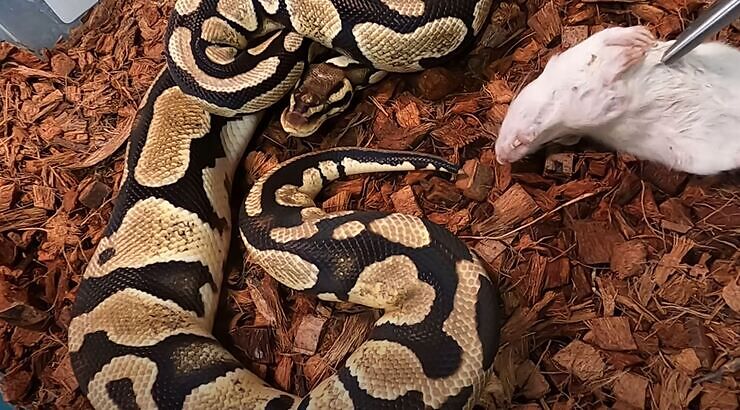MICE ARE NOT FOOD
Why to Avoid Selling and Using Live Rodents as Reptile Food
Given that larger reptiles in the wild tend to eat live rodents, it is no wonder that it is an unfortunately common practice to sell and use live rodents as reptile food. The argument in favor of this is that it is the natural way.
When you take a closer look at the situation, however, it becomes clear that selling and using live rodents, whether they are mice or rats, in this way is inhumane and there is no reason to continue it. There are more humane alternatives available, and reptiles will not notice the difference.
Negative Consequences for Rodents
Aside from the actual act of feeding the rodents to reptiles, the fact that they are sold for this purpose has several important negative impacts on humans and rodents.
It is still very common to find live rats and mice for sale specifically for this purpose, which means that most pet stores that sell rodents will assume they will be used in that way, instead of as pets.
Rodents Have a Lower Quality of Life
Most pet store owners and workers treat the rodents less humanely and give them a lower quality of life, since they figure they will just end up as food. Essentially, the workers will treat them as future food instead of pets or living, breathing things with emotions and physical needs. They see them as a disposable resource instead of something that should be cared for and treated with respect.
This includes putting them in more crowded condition, not giving them toys, and providing them with lower quality food. All of those factors can make the rodents unhappy and dramatically reduce their quality of life.
Rodents Do Not Receive Medical Treatment
The fact that pet stores see these rodents as disposable also affects their medical treatment. They are highly unlikely to get medical care of any sort if they are sick. It is even uncommon to treat sick rodents in pet stores, since they will either die or become food anyway. If they are food, their sickness is unlikely to transfer to the reptile, so the pet store owner does not care.
The lack of veterinary treatment also comes from the fact that they are viewed as disposable, cheap resources. Pet store owners do not want to put much money into caring for an animal that will just become food.
This lack of medical treatment leads to suffering. After all, if the rats are just left to die of their sickness or be sold for food, they will remain alive when they are sick and in pain. Not only will stores not treat the rats, but they will not euthanize them as this is potentially lost profit. Instead, the rats or mice just suffer as their body fights whatever illness they may have.
People Get Unhealthy Pet Rodents
Even in cases where pet stores sell rodents as pets in addition to for food, there is typically no distinction in how they are treated. The rodents sold as pets are usually the same ones sold as live reptile food.
This means that when someone buys a pet rodent, it will have been mistreated throughout its entire life so far. It will likely be in poor health from living in crowded conditions, not receiving medical care, and competing with others for food. This means that most pet rodents from stores that also sell live feeder rodents will have weaker immune systems and be more likely to become sick.
It Devalues the Lives of Rodents
Overall, most of the above issues stem from the fact that selling live rodents for feeding snakes devalues their life. This promotes viewing the rodents as disposable products that are cheap. In reality, they are living creatures that experience pain and feel emotion.
Rodents are Raised in Poor Conditions
Overall, most of the above issues stem from the fact that selling live rodents for feeding snakes devalues their life. This promotes viewing the rodents as disposable products that are cheap. In reality, they are living creatures that experience pain and feel emotion.
Negative Consequences for Pet Owners
We already mentioned that pet rodents from stores that also sell live feeder rodents tend to be unhealthier. This is far from the only negative way in which selling live feeder rats or mice affects rodent pet parents.
The Rodents are Not as Intelligent
Research indicates that if a rat is raised in a smaller or more crowded cage and without any toys present, they will not be as intelligent. By contrast, those raised with toys in more spacious cages were more intelligent. This means that the pet rodents typically bought will not be as intelligent as they could be had they been raised in proper conditions.
The Rodents Have More Stress
Unsurprisingly, rats also experience more stress when they are raised in crowded conditions. They will also have likely experienced stress when sent to the pet store, especially if little regard was given to their well-being and comfort due to being viewed as food or disposable. Higher levels of stress can further exacerbate the previously mentioned unhealthiness of pet rodents.
The Rodents Have Worse Bathroom Habits
Studies have also found that rats that get raised in smaller cages usually have poor bathroom habits. By contrast, those raised in bigger cages are significantly easier to litter-train, sometimes with minimal effort. This is a significant factor for many pet parents of rodents as it makes cleaning the cage much more difficult, and can increase any potential bad smells associated with the rodent going to the bathroom.
The Rodents are Not Socialized
The factor of socialization is also significant. To properly socialize an animal, it must be exposed to humans and handled by them from a young age. This is an essential trait of pets; otherwise, they will simply hide and stay away from humans, or become aggressive. With proper socialization, combined with exposure to normal everyday sounds, rodents have a better chance of being sociable, loving pets. Unfortunately, socialization is incredibly rare with live feeder rodents because pet stores do not see the point of it, given their purpose.
It is possible to work on socializing rodents after they have weaned, but it is significantly more effective if this process begins before weaning. It is also more effective if it begins sooner rather than later. Studies indicate that more socialization prior to weaning results in more affectionate, cuddly, personable, and trusting rodents.
If a rodent, or any other animal, is not properly socialized, it is likely to be afraid of humans, timid, and nervous. It is unlikely to want to be pet or held. It is also very likely to bite and scratch.
Breeders Do Not Care About Genetics or Personalities
Pet parents also suffer from the fact that breeders do not pay attention to factors such as personality traits and genetics. This means that mass-bred rats will frequently feature males that are abnormally aggressive. This is obviously a very bad trait in a pet rodent.
Female Rats are Frequently Pregnant
Because of the lack of concern regarding the future of the rodents sold as live feeders, it is common to house males and females together. This results in many of the female rodents being sold pregnant, without the purchaser knowing. That adds another layer of challenges for the pet owner as they have to figure out what to do with the baby rodents and could potentially end up with many more than they were prepared to take care of.
Feeding Live Rodents to Reptiles is Inhumane
One of the biggest reasons to avoid feeding live rodents to reptiles is the fact that this is inhumane and causes unnecessary suffering for the rodent.
Some people argue that feeding a live rodent to a snake is not actually cruel. This argument centers on either the lack of emotion or pain associated with rodents or the quickness of the action. Neither of these points is valid.
Rodents Feel Pain
There is more than enough scientific evidence to clearly show that rodents feel pain. Therefore, there is no reasonable argument to make in this aspect, unless you ignore science.
Some argue that the pain a rodent experiences with constriction is different than that of a human, claiming they have collapsible skeletons. This is also complete misinformation.
Being Constricted is Incredibly Painful
Not only do we know that rodents feel pain, but we have first-hand accounts from humans of what it feels like to be constricted by a snake.
Louis Daddono, is a zookeeper who almost died in 1997 after being constricted by a 22-foot python. He talked about his experience in 2007 on The Big Squeeze, a show on the Animal Planet and BBC. He described it as feeling as if he was suffocating with “incredible” pain. He also described feeling as if his eyes were going to rupture from his head. He felt as if there was a car on his body and chest, crushing him. At the same time, feelings of suffocating and drowning were present. The experience caused Daddono’s heart to stop and only the CPR performed by a fellow zookeeper kept him alive.
This is the way that snakes kill the rodents before eating them, so you are ensuring that the feeder rodent suffers in that way.
Stunning the Rodent Beforehand is Not an Alternative
Some owners of snakes will try to minimize the pain associated with constriction by stunning the rodents first. However, this frequently done in an inhumane way. It also does not stop the other suffering that the rodent experiences. Additionally, a stunned rodent will not move, which is one of the main arguments against frozen rodents that are thawed. If these snake owners are willing to feed their snakes non-moving rodents, why not take the extra step and use a humane option?
They Deserve Humane Treatment
Some people argue that even if it is inhumane to feed live rodents to snakes, it does not matter because rodents do not deserve humane treatment. They view them as lesser since they are small animals with shorter life spans and not traditional pets.
This is a very close-minded worldview. Who are humans to decide who is worthy of humane treatment? Every living thing should be treated kindly and with respect. Rodents, like all other living things, are deserving of humane treatment.
Negative Consequences for Pet Snakes
From the standpoint of keeping the snake safe, it makes sense to avoid using live rodents as food. That is because there is always a risk of the live rodent injuring the snake.
Once your snake gets older and larger, you would need to give it larger rodents, including bigger rats. Given the previously mentioned tendency towards aggressive behavior in mass-bred rats, this means there is a good chance that the live rat you would feed your snake would put up a fight. Obviously, that increases the chances of your snake getting bitten or scratched, which could be serious.
Even if you stick to using smaller prey, like a small mouse, there is a risk of your snake getting bitten. Although you may not realize it, the smallest bite can be life-threatening to a snake as there is always a risk of infection.
There is also the risk that a bite from a rodent of any size will puncture the tongue, mouth, or eyes of your snake. It can even reach the spine or internal organs, resulting in serious injuries or even death.
Bites Always Require a Visit to the Vet
Any time your snake gets accidentally bitten by live prey, you would need to take it to the vet for a checkup. Only a vet can confirm whether the wound is superficial or poses a more serious problem. This results in the snake owner spending additional time and money caring for their pet that would be unnecessary if they had simply opted for frozen food.
In some cases, the injuries from a bite can even require surgery, which is very expensive.
Disease is Also a Risk
There is also the risk that the live feeder rodent will carry a disease or parasites. These could then potentially be passed to the snake, depending on the disease. This concern is reduced with frozen rodents, since they are killed humanely earlier in life, before being exposed to potential parasites and diseases in transportation or in pet stores.
Benefits of Using Frozen Rodents Instead
Some people argue that you have to use live rodents to feed your reptiles, since there is no other practical option. This is either a lie or the result of misinformation. It is completely practical and effective to give reptiles frozen food.
As of several years ago, 92 percent of pet shops were still selling live rodents to be used as food. Even though 80 percent already sold frozen rodents as reptile food, three times more live rodents were sold for food compared to frozen ones. There is progress being made and the fact that this many pet stores sell frozen rodents indicates that people are buying them and successfully using them for this purpose.
Additionally, most captive snakes get raised using frozen rodents or can easily be trained to eat them. Any snake that is sold in a pet shop is usually easy to train to eat frozen rodents that have thawed, if they do not already do so.
It is very common for professional herpetologists and zoos to feed snakes frozen rodents that have been thawed. If these professionals do so, it is clearly a feasible option.
Live Feeder Rodents Cost Snake Owners More Money
Even from a purely economic standpoint, it makes more sense to opt for frozen rodents instead of live ones. If you feed live rodents to your snake, you must keep them alive, which requires feeding them and maintaining a cage. It is simply impractical to drive to the store every time you need to feed your snake to buy a few rodents.
By contrast, you can take a single trip to the store to buy a large amount of frozen feeder rodents. Since they are frozen, they can last a long time, without any need to waste time or gas money going to the store multiple times.
Humane Killing
Frozen rodents are killed in a humane manner, usually with carbon dioxide while still at the breeding facility.
Reduced Risk of Mistreatment
The fact that the frozen rodents are killed while still at the breeding facility reduces the opportunities for them to be mistreated as well. There is no endless time spent in a pet store waiting to be bought, then waiting in a home to be eaten. There is also no stress and potential mistreatment associated with being transported from place to place, first from the breeding facility to the pet store, and then from the pet store to a home.
Refuting Common Arguments
Using all of the above information, you can counter all of the common arguments in favor of feeding live rodents to reptiles and selling them for this purpose. In the interest of clarity, here are concise refutes to the most common arguments, with a focus on those which have not already been discussed.
“Live Feeding is Natural”
Perhaps the most common argument is that live feeding is natural, since this is what happens in nature. This is a ridiculous argument because snake owners are already going against nature by owning a snake and restricting its life in different ways. Additionally, there are numerous elements of snakes living in nature that pets do not want to recreate, from negative stress to fear of disease to predators to shorter lifespans. You cannot pick and choose which natural factors you want for your pet.
“Snakes Need to Kill”
Another argument is that the snakes need to act on their instinct to kill. It is true that animals need to be able to expend their energy, but this does not need to happen in the form of killing. After all, most cat or dog owners do not feel as if they should let those pets hunt despite their ancestors doing it in the wild. They are fine with active play and the same can be said of snakes.
On a similar note, the argument that snakes enjoy killing is invalid. Snakes do not actually enjoy killing, they just respond to stimuli and need an outlet.
“My Snake Needs Live Prey”
Some people argue that their particular snake needs to eat live prey and it refuses to accept anything else. While this is potentially possible, it is also incredibly rare. Remember that all of the most common snakes sold in pet stores can become accustomed to eating thawed frozen rodents. Combine that with the fact that zoos opt for frozen rodents, and it seems clear that most snakes will be fine with frozen.
It may take some effort to get certain snakes accustomed to eating thawed frozen rodents instead of live prey, but it is always possible. You may need to use some tricks to help you, including consulting your vet. The bottom line, however, is that it is possible.
“Freezing Destroys Nutrients”
There is some evidence supporting that freezing food destroys some nutrients and vitamins. Even so, this is not a valid argument, as research shows that small reductions in vitamins and nutrients is not enough to harm the snake. After all, most dogs and cats eat highly-processed foods that have lost some of their nutrients. Why not do the same with snakes?
The Bottom Line
Using live rodents as reptile food is inhumane, worsens the treatment of pet rodents in stores and by breeders, and can be dangerous to your snake. Using thawed frozen rodents that have been humanely killed is the better option.

